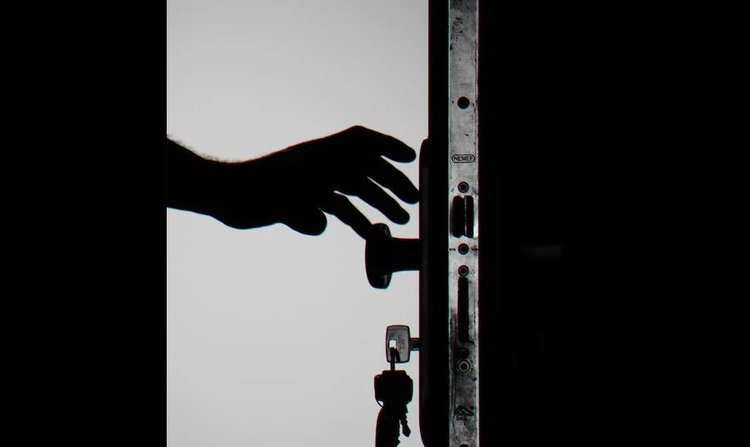A man’s home is his castle, and as its steward, it is his responsibility to see to its defense. Home security is a paramount concern for many individuals, and while the desire to protect one's property is understandable, it's crucial to approach the issue with a combination of awareness, legal understanding, and practicality. This article provides a comprehensive guide to home defense, covering various aspects from physical deterrents to technological solutions.
Avoid Threatening Signs:
While the impulse to put up signs warning potential intruders may be strong, it's advisable to avoid signs that explicitly state a willingness to use lethal force. Such signs not only escalate the situation but can also be used against homeowners in legal proceedings. Instead, opt for a simple "No trespassing" sign to convey the message clearly and without unnecessary provocation.
A “Trespassers will be shot” sign also advertises that a homeowner has guns, which, to some thieves, is not a deterrent at all but an invitation to steal powerful firearms that they themselves can use in crimes.
Property Appearance:
A good-looking piece of property can serve as a magnet to burglars. A nice house with a nice car is a good indication of good loot for thieves. If possible, park your car inside the garage or cover it with a tarp when away for an extended period. While you can't hide the appearance of your home, there are other measures to make it a less appealing target.
Securing Doors:
Doors are often the first point of entry for intruders. Strengthen your doors by using long wood screws in the hinges to prevent forceful entry. Consider upgrading your doorknob to a fingerprint-operated one for added security. Additionally, install a deadbolt or another secure lock inside the door for extra protection.
Securing Windows:
Window locks are relatively simple and cheap. They come as either extendable telescopic bars or small clamps that prevent a window from being opened. If you fear that an intruder will simply break your glass, consider installing metal bars or plexiglass panels, which are nigh-unbreakable.
Alarm Systems and Security Cameras:
Investing in a modern alarm system with security cameras can provide an extra layer of defense. Motion-activated cameras only activate when movement is detected, and some advanced systems can even contact emergency services if an intruder is confirmed. This not only helps in deterring criminals but also aids law enforcement in responding promptly.
Guard Dogs:
Certain dog breeds are known for their protective instincts and make excellent guard dogs. Breeds such as Dobermans, German Shepherds, Rottweilers, Belgian Malinois, Pitbulls, and their cousins can serve as effective deterrents. Their presence alone can discourage intruders, and their loyalty to their owners is unmatched.
Firearms for Home Defense:
You are your own first responder, and the last line of defense will come down to you and your rifle. Your home defense firearms should be properly equipped for close-quarters combat. This includes features such as lasers for rapid target acquisition, flashlights for low-light situations, and short-range optics like a red dot for precise aiming in confined spaces.
Handguns are compact and easy to maneuver and are popular choices for home defense. Semi-automatic pistols rather than revolvers are preferred for their modularity since many revolvers are not equipped with picatinny rails to hold flashlights or lasers.
The same principle also applies to carbines like the AR-15 and its variants. Many homeowners increasingly depend on “America’s rifle” for home defense due to their maneuverability and ease of customization. However, one should be mindful of over-penetration with the AR’s high-velocity rounds.
Accessories:
- Lasers: Mounted lasers assist with rapid target acquisition. In high-stress situations, a laser can help aim the firearm accurately, especially in low-light conditions.
- Flashlights: Tactical flashlights are crucial for identifying potential threats in low-light scenarios. Many home invasions occur at night, so having a bright light on your firearm can be a significant advantage.
- Red Dot Sights: For handguns or rifles, a red dot sight enhances target acquisition speed. It allows for quick aiming without the need for precise eye alignment, making it ideal for the close-quarters engagements typical of a home defense scenario.
- Suppressors: While they are heavily regulated, suppressors can reduce the noise associated with firing a weapon. This can help prevent hearing damage for the homeowner and nearby family members.
- Sling: A sling allows you to carry your firearm hands-free and keeps it accessible. It can be particularly useful if you need to navigate through your home while carrying other items.
Familiarize yourself with local and state laws regarding firearm ownership and use. Understanding the legal implications of using a firearm for home defense is essential to avoid unintended legal consequences.
Remember, the goal of firearms and accessories in a home defense scenario is to provide a means of protection while prioritizing safety for all occupants. Responsible firearm ownership involves not only selecting the right tools for the job but also ongoing training and adherence to legal regulations. Always prioritize the safety of yourself and your loved ones when considering home defense measures.

